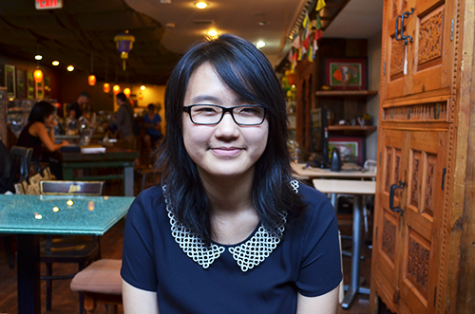Nobel Prize winner comes to Case Western
Thomas Cech, 1989 Nobel Prize for Chemistry winner, gives a talk on RNA
On Oct. 17, Nobel Award for Chemistry winner Thomas Cech came to Case Western to give a talk about his well-known research on RNA. Held at Schmitt lecture hall as a part of the “Frontiers in Chemistry” lecture series, the talk was filled with students, both undergraduate and graduate, interested local Cleveland-area residents and more.
Dr. Blanton Tolbert, who introduced Cech, joked that he met Cech once and when Cech started his lecture, Cech joked that he’ll never forget Tolbert again since it takes two times to remember a name.
Cech began his talk with Tetrahymena thermophila, the organism that he studied, and how he examined the RNA splicing mechanism when he discovered that an unprocessed RNA could splice itself. Almost a decade after his initial discovery, he found that RNA splicing was also going on in transcription, which was an unexpected result. In addition, he found that RNA has catalytic functions rather than just being a passive carrier of information.
All these discoveries were a result of doing a particular experiment for the first time, in which he mixed unspliced RNA from Tetrahymena thermophila with magnesium chloride and guanosine triphosphate.
Cech’s discovery was so significant that it altered the way scientists thought about the central dogma, since scientists originally thought proteins were the catalysts of biological reactions. Since Cech’s discovery, the catalyst RNAs were discovered and named “ribozymes.” It is this discovery that Cech and Sidney Altman, who almost concurrently came to the same conclusion that Cech did, won the 1989 Nobel Prize for Chemistry, when Cech was 41.
Despite the technicality of the presentation, Cech also managed to add humor throughout his talk, such as when he mentioned a protein daisy, a riff of the “love me, love me not” daisy game, that a graduate student gave him during a time when he was wavering between two scientific theories.
Cech then transitioned his talk to telomerase research, which also intrigues him. Telomerase is a substance that copies telomere sequences and lengthens them. Telomeres, which are affected by telomerase, are located at the ends of chromosomes and are shortened with each DNA replication. Normally, telomerase is not very active in most body cells, but it is reactivated in nearly 90 percent of cancer patients. Due to the significance of telomerase in cancer, Cech’s work is important in the field of cancer research and the long path to finding a more targeted approach to cancer treatment.
At the end of the lecture, Cech thanked the audience for coming as well as his colleagues and the people in his lab, who all helped him in his research, since their works helped him come to his conclusions about RNA as well as telomerase.

Jessica Yang is a second-year Biochemistry and Psychology double major student. In her spare time, she enjoys watching movies, reading books and fan-girling...

